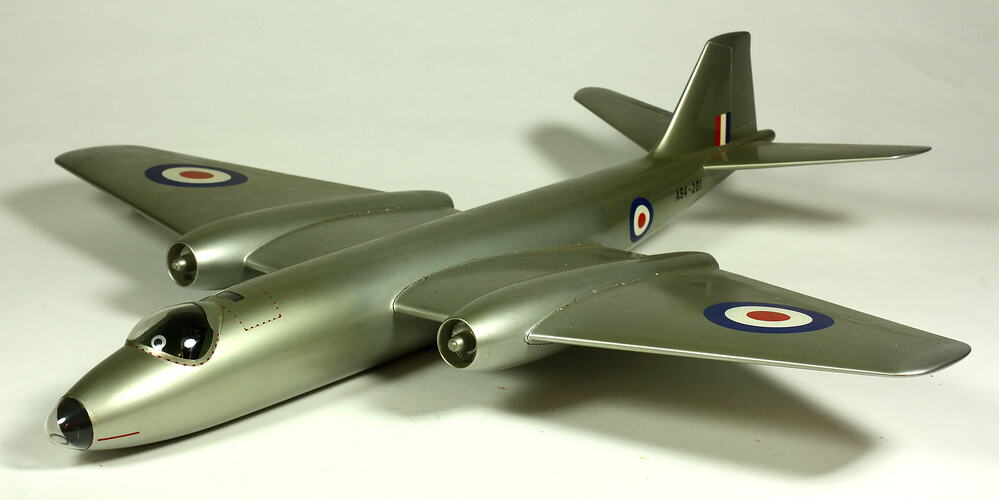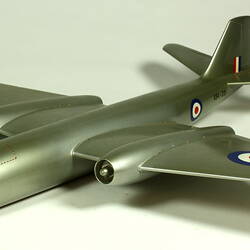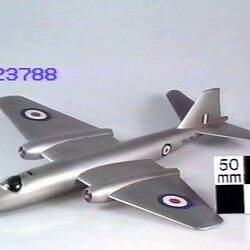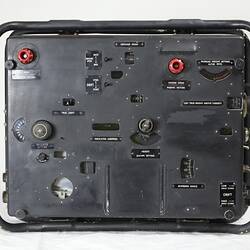Planning for the production of Britain's first jet bomber began during the Second World War. After examining proposals from other manufacturers, a twin-jet design submitted by the English Electric Company was approved. The design team leader was William 'Teddy' Petter son of Sir Ernest Petter founder of the well-known Petter Limited engine manufacturing firm at Yeovil.who had designed the Lysander aircraft while working for Westland Aircraft.
The prototype jet bomber first flew on 13 May 1949 with Wing Commander Roland Beaumont at the controls. The name Canberra was used in honour of Australia's capital city. The Canberra's characteristic broad wing assisted high altitude operation and two axial-flow Rolls-Royce Avon jet engines were fitted in streamlined nacelles. After entering RAF service in the early 1950s, the last RAF Canberras (PR.9 models) were not retired until 2006. In the USA the Canberra was built for the USAF by the Glenn Martin Company as the B-57. Export sales of UK-built Canberras were also strong.
In Australia, the type was licence-built by the Government Aircraft Factories as the GAF Canberra B.20. Final assembly and test flying was conducted at Avalon Airfield near Geelong in Victoria. A total of 48 Canberras were built in Australia with some UK-built B.2 and T.4 versions also seeing service. Many of Canberra B.20 aircraft were flown in combat during the Malayan Emergency and the Vietnam War. The Canberras of 2 Squadron RAAF were based at Phan Rang in South Vietnam and carried out medium altitude bombing missions with the call-sign 'Magpie'. Two Canberras were lost in Vietnam with two crewmen missing from one of these aircraft in 1971 being recently found. The Canberra B.20 was withdrawn from RAAF service in 1982 following metal fatigue investigations.
More Information
-
Keywords
-
Authors
-
Article types



